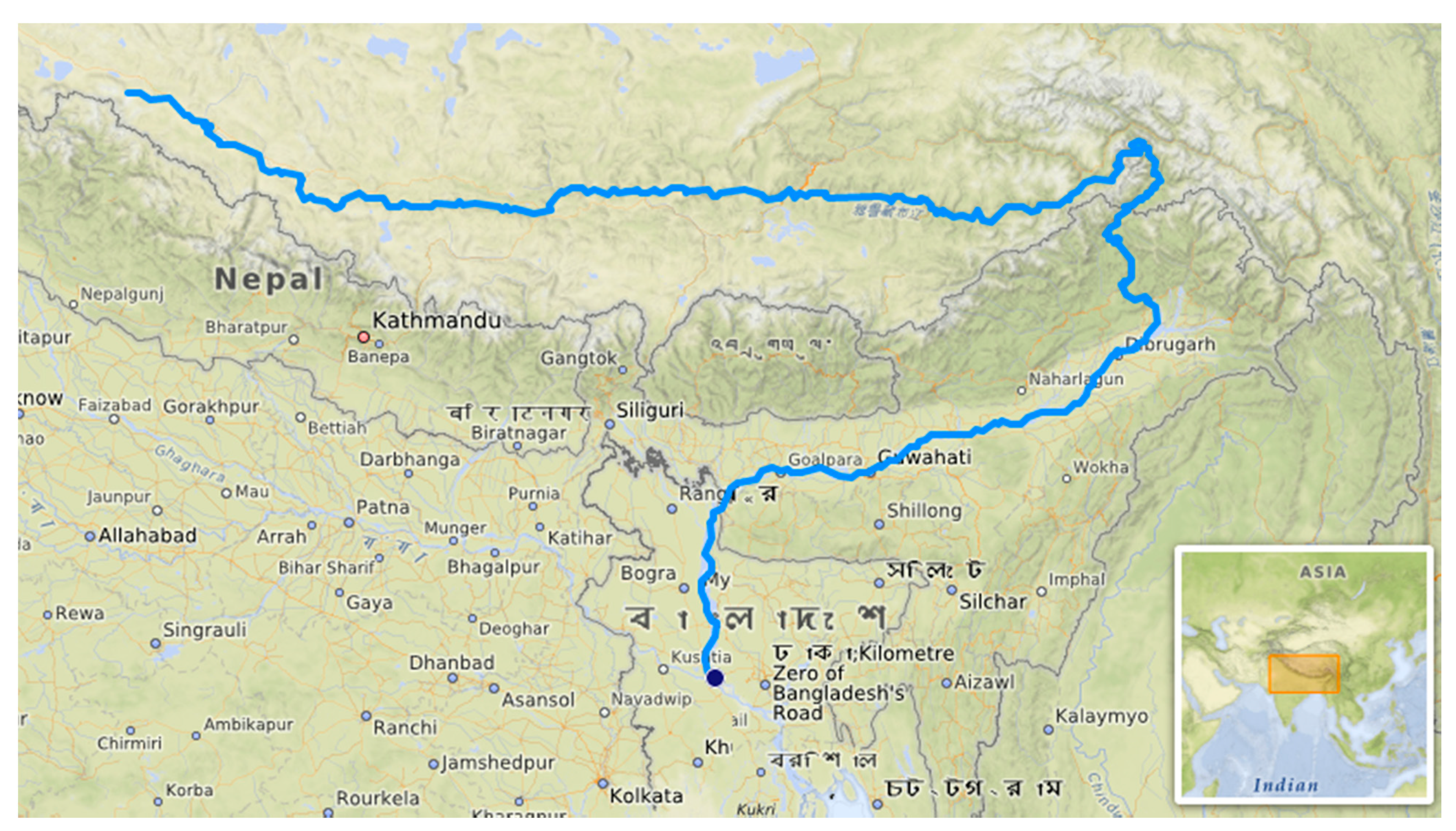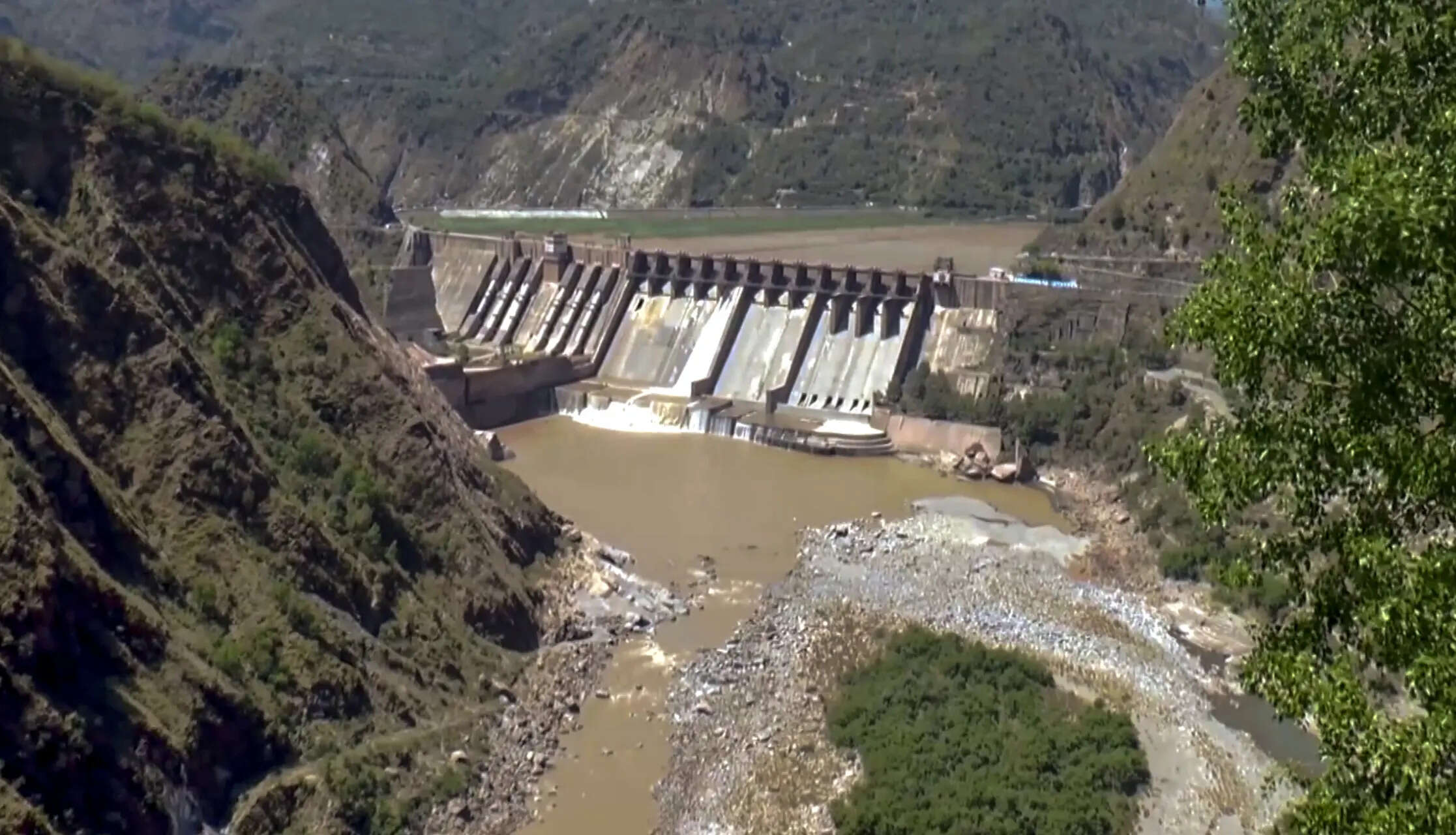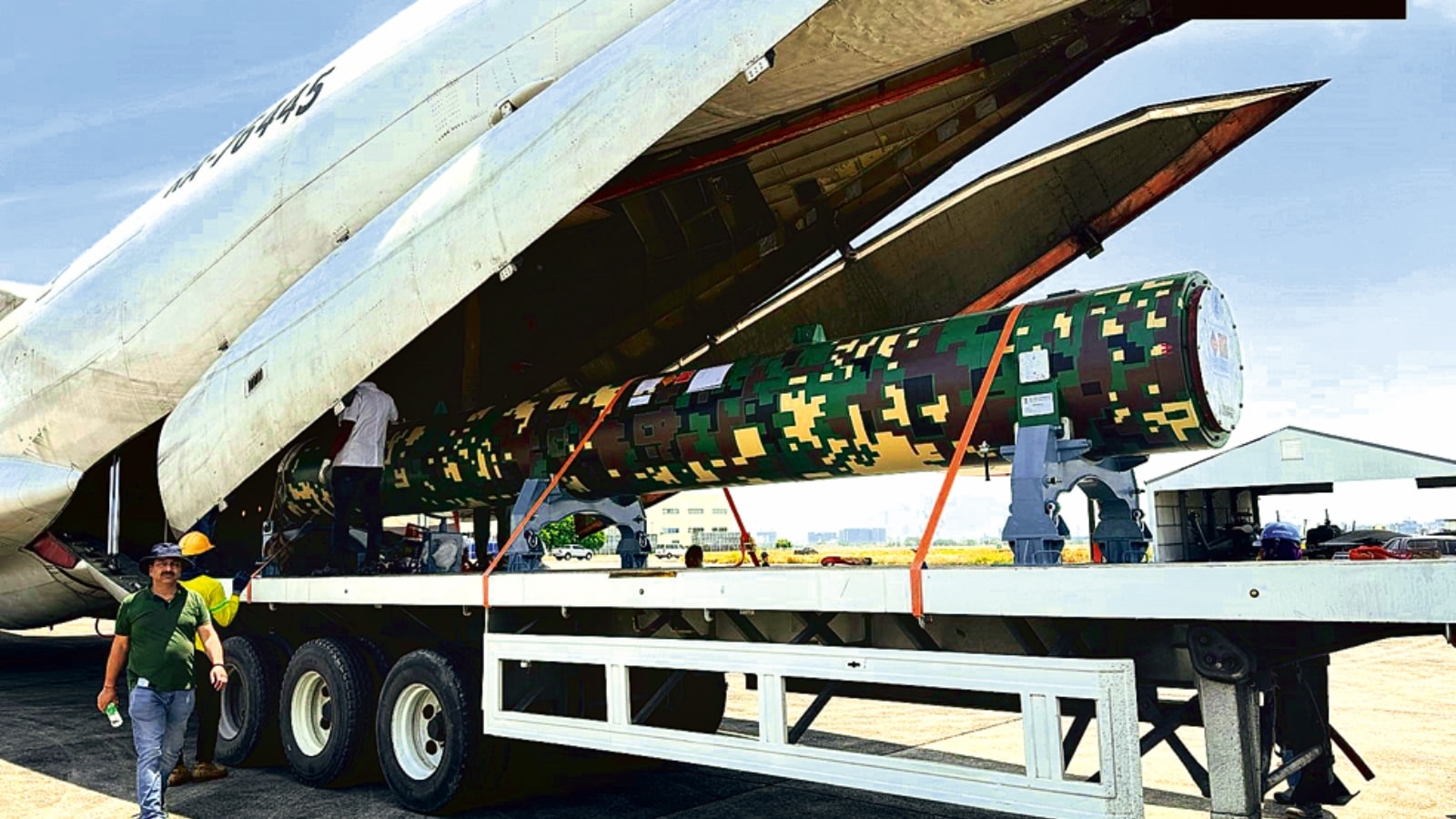SOURCE: AFI


In a calculated shift, Kashmiri terror outfits are shedding their overtly Islamist militant identities and adopting the guise of political “resistance” movements, drawing inspiration from Hamas and the Palestinian narrative. This rebranding, evident in their tactics, language, and propaganda, aims to recast their decades-long insurgency as a popular struggle against “occupation,” distancing themselves from the stigma of terrorism and seeking broader international legitimacy.
Below, we explore six key ways these groups are mimicking the Palestinian model, with profound implications for India’s security and the global perception of the Kashmir conflict.
Continue readingSOURCE: AFI


In a dramatic escalation of regional tensions, India’s withdrawal from the Indus Waters Treaty (IWT) in 2025 has triggered a wave of provocative rhetoric in China, particularly on social media platforms. Some Chinese netizens have called for damming the Brahmaputra River—known in China as the Yarlung Zangbo—to choke off water supplies to downstream India. This inflammatory narrative, though not officially endorsed by Beijing, underscores the fragility of transboundary water governance in South Asia and the potential for water to become a geopolitical weapon.
The IWT, brokered by the World Bank in 1960, has long governed the sharing of the Indus River system’s waters between India and Pakistan. India’s decision to withdraw from the treaty, citing national security concerns and dissatisfaction with Pakistan’s compliance, has sent shockwaves through the region. The move has not only strained India-Pakistan relations but also prompted neighboring China to reassess its own strategic position as an upstream power controlling critical water resources.
Continue readingSOURCE: IDRW.ORG


The Aeronautical Development Agency (ADA) is spearheading an ambitious initiative to integrate advanced Sense and Avoid (SAA) or Detect and Avoid Systems (DAAS) into its Tapas and Archer-NG Medium Altitude Long Endurance (MALE) Unmanned Aerial Vehicles (UAVs). This cutting-edge technology aims to enable these UAVs to navigate safely in complex airspace, autonomously avoiding collisions with other aerial vehicles, birds, buildings, and other obstacles.
By incorporating a sophisticated multi-sensor data fusion processor and a combination of off-the-shelf and novel sensors, ADA is positioning India’s MALE UAVs to operate seamlessly in both controlled and uncontrolled airspace, enhancing their operational safety and versatility.
Continue readingSOURCE: IDRW.ORG


In a significant step toward India’s first private orbital rocket launch, Hyderabad-based Skyroot Aerospace announced on April 28, 2025, that the Composite Nozzle and Flex Nozzle Control (FNC) System for the Vikram-1 rocket’s Stage-1, named Kalam-1200, have successfully passed their pre-flight tests. This critical “steering system” for thrust vector control is now ready for integration with the motor, paving the way for an upcoming static fire test and the much-anticipated Vikram-1 launch.
The achievement, celebrated in posts on X by Skyroot’s CEO Pawan Chandana and the company’s official handle, underscores India’s growing prowess in private space exploration and positions Skyroot as a trailblazer in the global small-satellite launch market. Here’s a deep dive into this milestone, its technical significance, and what it means for Vikram-1’s journey to orbit.
Continue readingSOURCE: AFI


On April 29, 2025, the Directorate General of Public Relations (DGPR) of the Pakistan Air Force (PAF) released a video on its official X account, @DGPR_PAF , titled “Pakistan Air Force Reaffirms Unwavering Commitment to National Sovereignty & Defence Excellence.” The video, posted at 09:43 IST, aimed to showcase the PAF’s capabilities and dedication to protecting Pakistan’s sovereignty amid heightened regional tensions, particularly following India’s withdrawal from the Indus Waters Treaty (IWT).
Indian social media users, defense watchers, and open-source intelligence (OSINT) analysts were quick to point out major blunders in the video. Among the visuals intended to portray Pakistan’s military might, the video bizarrely included:
Continue readingSOURCE: AFI


Following India’s suspension of the Indus Waters Treaty (IWT) on April 24, 2025, in response to the Pahalgam terror attack, some Pakistani politicians and commentators have issued bold threats to target Indian dams and water infrastructure to prevent the diversion of water from the Indus, Jhelum, and Chenab rivers.
These statements, often amplified on platforms like X, reflect a bravado that grossly overestimates Pakistan’s military capabilities and underestimates the complexity of destroying modern dams. This article dissects the impracticality of such threats, calculates the immense challenges involved in targeting dams, and underscores why this rhetoric is a strategic misstep for Pakistan.
Continue readingSOURCE: AFI


Recent satellite imagery shared by open-source intelligence analyst Damien Symon (@detresfa_
) on April 28, 2025, reveals Pakistani naval activity in the northern Arabian Sea, with frigates, corvettes, and a replenishment tanker spotted near the ports of Gwadar and Ormara, while much of the fleet remains docked at Karachi. These movements have sparked speculation about Pakistan’s intentions, particularly given the strategic importance of these ports and ongoing regional tensions with India. However, a closer look suggests this is likely a routine maneuver with a clear message rather than a prelude to conflict.
The satellite images show a modest but visible naval presence in the waters near Gwadar and Ormara, two key ports along Pakistan’s Makran coast in Balochistan. Gwadar, a linchpin of the China-Pakistan Economic Corridor (CPEC), and Ormara, home to the Jinnah Naval Base, are critical to Pakistan’s maritime strategy. The presence of frigates and corvettes—likely including modern Chinese-built Type 054A/P Tughril-class frigates or Turkish-designed Babur-class corvettes—alongside a replenishment tanker, suggests a capability for sustained operations at sea. Meanwhile, Karachi, Pakistan’s primary naval hub, appears to be hosting the bulk of the fleet, possibly including older Zulfiquar-class frigates and Agosta-class submarines, though only two of Pakistan’s eight submarines are reportedly operational due to ongoing repairs.
Continue readingSOURCE: AFI


On April 28, 2025, a Turkish C-130 Hercules cargo plane landed at Karachi’s Jinnah International Airport, triggering a flurry of speculation about its purpose. Recent reports from Pakistani media outlets claimed the aircraft was delivering guided missiles for Turkish-supplied unmanned aerial vehicles (UAVs) to bolster Pakistan’s military capabilities. However, the Turkish Ministry of Defence swiftly debunked these claims, stating that the plane’s stop was solely for refueling before continuing its scheduled route. The incident, set against the backdrop of escalating India-Pakistan tensions, underscores the dangers of unverified narratives in a volatile region.
The Turkish C-130E Hercules, a versatile military transport aircraft, touched down in Karachi on April 28, as confirmed by flight-tracking data from open-source intelligence (OSINT) trackers. Pakistani outlets, citing unnamed sources, alleged that the plane was carrying precision-guided munitions compatible with Turkish-made drones, such as the Bayraktar TB2, previously supplied to Pakistan. These claims gained traction amid heightened regional anxieties following India’s withdrawal from the Indus Waters Treaty (IWT) and ongoing military posturing along the India-Pakistan border.
Continue readingSOURCE: AFI


On April 27, 2025, Pakistan International Airlines (PIA) flight PK894, en route from Islamabad to Kuala Lumpur, was forced to take a significantly longer route, extending its flight time from the usual 5 hours and 24 minutes to 8 hours and 16 minutes. The detour, captured in Flightradar24 data shared on X by user @flightradar24, reflects the impact of escalating India-Pakistan tensions following India’s suspension of the Indus Waters Treaty (IWT) on April 24, 2025, and the Pahalgam terror attack days earlier.
Flight PK894, typically a direct route from Islamabad’s Allama Iqbal International Airport to Kuala Lumpur International Airport, covers a distance of approximately 4,500 km, with an average flight time of 5 hours and 24 minutes on a Boeing 777-200ER, cruising at 900 km/h. The standard path crosses northern India, the Bay of Bengal, and the Andaman Sea, minimizing fuel consumption and transit time for the 314 passengers the aircraft can carry.
Continue readingSOURCE: RAUNAK KUNDE / NEWS BEAT / IDRW.ORG


Bharat Dynamics Limited (BDL) has significantly ramped up the production of the Astra MkI Beyond Visual Range Air-to-Air Missile (BVRAAM), aiming to ensure rapid replenishment capability for the Indian Airforce in the event of a conflict. With a strike range exceeding 110 kilometers, the Astra MkI BVRAAM provides India’s air power with a potent indigenous solution for air dominance at extended ranges.
The Indian Air Force (IAF) and Indian Navy have already begun the induction of the Astra MkI into operational service. The Su-30MKI and Tejas Mk1 fighter jets have been cleared to fire the Astra MkI, bolstering their long-range engagement capabilities. Meanwhile, the Indian Navy’s MiG-29K fleet has commenced in-flight trials of the Astra MkI, paving the way for its full operational deployment in the naval aviation wing as well.
Continue readingSOURCE: RAUNAK KUNDE / NEWS BEAT / IDRW.ORG


In a development that has caught the attention of regional defense watchers, flight tracking data has revealed an Indian Air Force (IAF) Ilyushin Il-76MD transport aircraft (registration K12879) landing in Manila, Philippines earlier today. The flight, IFC485, departed to Angeles City, has fueled speculation that it could be linked to the delivery of additional BrahMos supersonic cruise missile systems to the Philippine military.
The flight path, captured by Flightradar24, shows the IL-76 aircraft traversing Southeast Asia before touching down in Manila. While no official announcement has been made yet by either Indian or Philippine defense authorities, the timing and nature of the movement align closely with ongoing defense cooperation between New Delhi and Manila.
Continue readingSOURCE: RAUNAK KUNDE / NEWS BEAT / IDRW.ORG


Dr. S.V. Ramanamurthy, Director of the Gas Turbine Research Establishment (GTRE), has confirmed that India is actively pursuing a joint design and co-development model with an international engine manufacturer for the Advanced Medium Combat Aircraft (AMCA)’s next-generation engine. Speaking on the sidelines of a recent event, Dr. Ramanamurthy emphasized that while global collaboration is on the cards, significant groundwork in advanced technologies is already underway domestically.
“We’ll be going ahead with maybe co-design and co-development with an international engine house,” said Dr. Ramanamurthy, adding that India has already initiated work in parallel on advanced propulsion technologies. “From our side, we have already started R&D work in collaboration with institutes and academia. The advanced technologies are being worked on—those efforts have already been initiated,” he stated.
Continue readingSOURCE: AFI


On April 25, 2025, the Defence Research and Development Organisation (DRDO) achieved a groundbreaking milestone by conducting a scramjet combustor ground test for over 1,000 seconds at its Scramjet Connect Test Facility in Hyderabad. This test, the longest reported scramjet engine run to date, marks a pivotal moment for India’s Hypersonic Cruise Missile Development Programme and positions the country as a leader in hypersonic technology.
But how significant is this achievement compared to global developments in scramjet technology? This article explores the implications of the 1,000-second test and benchmarks it against international efforts.
Continue readingSOURCE: AFI


In the high-stakes arena of modern warfare, cruise missiles like the Indo-Russian BrahMos and the French SCALP-EG (Storm Shadow) represent two distinct philosophies of precision strike capability. The BrahMos, a supersonic beast, roars with speed and power, daring air defenses to challenge its dominance. In contrast, the SCALP-EG, a subsonic, stealthy predator, slips through defenses undetected, striking with surgical precision before the enemy knows it’s coming.
As India, a user of both missiles, bolsters its arsenal amid escalating tensions with Pakistan and China in April 2025, the contrasting strengths of these systems highlight their complementary roles in rattling adversaries and reshaping regional deterrence. Here’s a deep dive into the BrahMos and SCALP, two missiles that embody the art of war in starkly different ways.
Continue readingSOURCE: AFI


In late April 2025, the Pakistan Air Force (PAF) has significantly ramped up Combat Air Patrols (CAPs) over Karachi, Islamabad, Rawalpindi, and Skardu, signaling heightened alertness in response to escalating tensions with India following the April 22, 2025, Pahalgam terrorist attack that killed 26 tourists. Concurrently, the Indian Air Force (IAF) has launched a large-scale military exercise named Aakraman (Attack), involving its top-tier fighter jets and pilots, as reported by India Today on April 25, 2025.
Social media posts on X, including those from @OSINTWarfare and @PakSword313, indicate that the PAF has operationalized forward airbases like Saidu Sharif and Skardu, deploying JF-17C Block III fighters armed with PL-10 and PL-15 missiles. This flurry of aerial activity, set against the backdrop of India’s aggressive military drills and diplomatic retaliation, underscores a precarious standoff between the nuclear-armed neighbors, raising concerns about potential escalation.
Continue reading